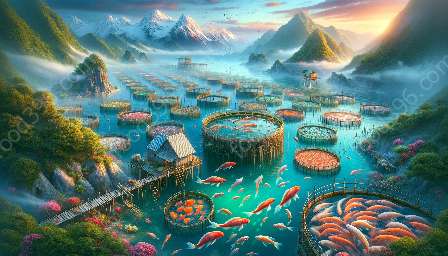Seafood species play a vital role in the aquaculture industry, contributing to sustainable seafood production and environmental conservation. Aquaculture of seafood species involves the cultivation and breeding of various marine and freshwater species for human consumption, as well as conservation and research purposes. This topic cluster explores the growth and development of seafood species in aquaculture and its significance in seafood science.
The Importance of Aquaculture of Seafood Species
Aquaculture of seafood species is crucial for meeting the increasing demand for seafood as the global population continues to grow. It provides a sustainable solution to overfishing and depletion of wild fish stocks, reducing the pressure on natural marine ecosystems. Furthermore, aquaculture helps in the conservation of endangered species by providing controlled environments for their reproduction and growth, thereby contributing to marine biodiversity.
Additionally, the aquaculture industry creates employment opportunities and stimulates economic growth in coastal and rural communities. By cultivating seafood species in aquaculture, countries can reduce their reliance on imported seafood and strengthen their food security. Furthermore, aquaculture practices can help in the restoration and maintenance of degraded aquatic habitats, enhancing water quality and ecosystem health.
Growth and Development of Seafood Species
The growth and development of seafood species in aquaculture involve various stages, including larviculture, juvenile rearing, and grow-out. Larviculture is the initial phase, during which the larvae of seafood species are nurtured and raised under controlled conditions. This delicate stage requires precise environmental parameters, proper nutrition, and disease management to ensure the survival and healthy growth of the larvae.
Following larviculture, the juveniles of seafood species are reared in nursery systems to promote their growth and prepare them for transfer to grow-out facilities. These facilities can range from ponds and cages to recirculating aquaculture systems, depending on the species being cultivated. During the grow-out stage, the seafood species continue to mature until they reach marketable size, ready for harvest and processing.
Seafood Science and Aquaculture Research
Seafood science plays a critical role in the aquaculture industry by conducting research and innovation to enhance the growth, development, and sustainability of seafood species cultivation. Scientists and researchers explore various aspects of aquaculture, including nutrition, genetics, disease management, and environmental impact, to optimize production efficiency and minimize ecological footprint.
Through advancements in aquaculture technology and practices, seafood science aims to address challenges such as disease outbreaks, feed efficiency, and environmental sustainability. This interdisciplinary field integrates biology, chemistry, engineering, and environmental science to develop innovative solutions for the aquaculture industry, ultimately contributing to food security and responsible resource management.
Conclusion
The growth and development of seafood species in aquaculture are essential for meeting the increasing global demand for seafood while preserving natural marine ecosystems. Through sustainable aquaculture practices, the industry can support economic development, food security, and biodiversity conservation. Furthermore, the intersection of seafood science and aquaculture research drives innovation and improvements in cultivation techniques, benefiting both seafood producers and consumers.

